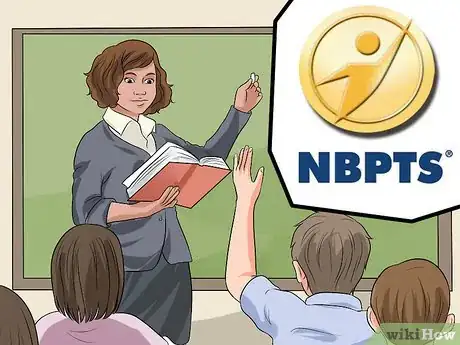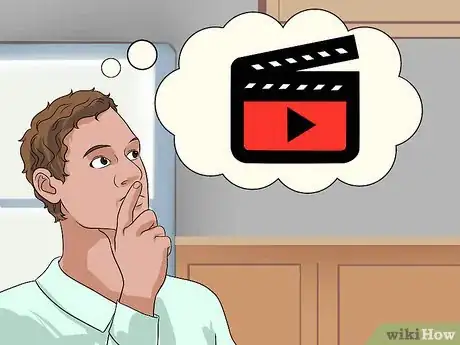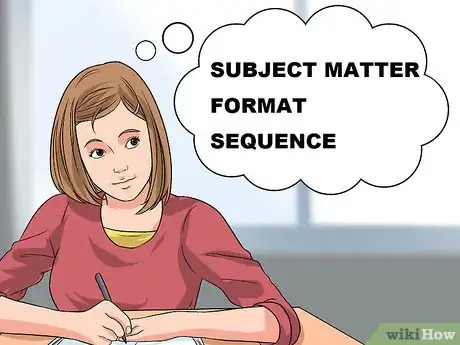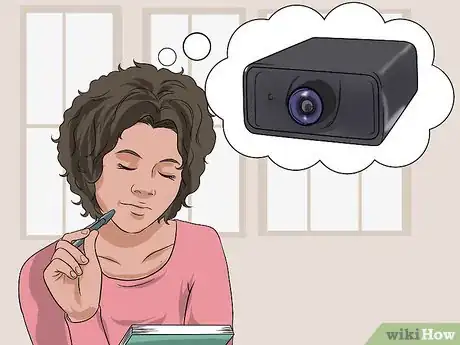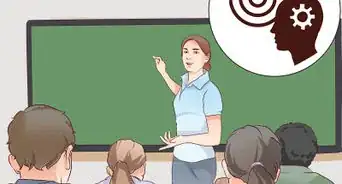This article was co-authored by César de León, M.Ed.. César de León is an Educational Leadership Consultant and currently serves as an Assistant Principal for the Austin Independent School District in Austin, TX. César specializes in education program development, curriculum improvement, student mentorship, social justice, equity leadership, and family and community engagement. He is passionate about eradicating inequities in schools for all children, especially those who have been historically underserved and marginalized. César holds a Bachelor’s degree in Education and Biology from Texas State University and a Master’s degree in Educational Leadership from The University of Texas at Austin.
There are 14 references cited in this article, which can be found at the bottom of the page.
wikiHow marks an article as reader-approved once it receives enough positive feedback. In this case, 100% of readers who voted found the article helpful, earning it our reader-approved status.
This article has been viewed 94,150 times.
Lesson plan objectives are important because they lay the framework for education, the intent of the education, and the manner in which assessments will be accomplished. Writing lesson plan objectives can be fun, but it can also be overwhelming, partially because of the pressure to help students succeed. With just a few short steps you can be well on your way to writing worthwhile lesson plan objectives in no time.
Steps
Following the Rules
-
1Follow state-wide practices.[1] If you are teaching in the US, determining if your state follows Common Core State Standards or not is an instrumental step to lesson plan objective creation. Some states follow all standards, others follow only the English Language Arts & Literacy portion, and a few do not follow Common Core at all. Follow your state's lead and promote the current philosophical teaching practice.[2]
-
2Adopt teaching standards. Whether your location adheres to the National Board for Professional Teaching Standards (NBPTS) or some other organization's standards, utilize the accepted guidelines to ensure your objectives are professional, holistic, and support common standards.[3]Advertisement
-
3Abide with school policies. Local students may require specific types of instruction. Question local leaders, administrators, and peers regarding and school requirements exterior to aforementioned practices and standards.
Structuring the Lesson Plan Objectives
-
1Consider the desired outcome of the class. Without a final objective, knowing what steps to create, and what assessments to measure is quite difficult. Focus on how to get students to the final goal of the course.
- Will the students do anything differently as a result of the course? Whether the final goal is to rewire a home or write a screenplay, knowing what students are expected to learn will ensure the required topics are included.
- Ensure the outcome is measurable. Either a student can solve the algebra problem with the provided instruction or they cannot.
-
2Combine the learning domains for a comprehensive experience. Learning is generally divided into 3 domains: cognitive, psychomotor, and affective. Attempt to diversify the lesson plan objectives to be as inclusive as possible. Most education should include varying amounts of each so as to reach students more comprehensively.[4]
-
3Build thinking skills with cognitive lesson plans. Task students with objectives that challenge their ability to recall and understand data, apply that knowledge towards a result, then analyze and evaluate it sufficiently that new branches of the concept can be created.[5] For example, if you were doing a lesson on ant colonies, you might include the following elements from Bloom’s revised taxonomy of the cognitive domain:
- Remembering: Test the students on their knowledge of the different types of ants that make up the colony (workers, soldiers, queens, drones, and juveniles).
- Understanding: Ask students to demonstrate their understanding by explaining how the different types of ants work together to make the colony function properly.
- Application: Have students apply their knowledge by identifying different types of ants while observing an ant farm.
- Evaluation: Task students with evaluating their work. What did they learn that was new? Were they able to apply their knowledge effectively? Can they establish a set of rules or criteria for identifying the different types of ants in the colony?
- Creation: Ask students to create a model of an ant colony showing the different types of ants engaged in different behaviors. Or, have them extrapolate from their knowledge of ant colonies to create a fictional colonial species that functions in similar ways to ants.
-
4Stimulate social and emotional growth with affective lessons. Affective lesson plans deal with students’ emotions, and how they receive, reply to, and categorize stimuli in a learning environment. Affective growth can be beneficial in all disciplines, particularly where self-discipline and appreciation for teamwork can be utilized to improve self-worth and self-confidence.[6] Following Bloom’s Taxonomy of the affective domain, an affective lesson plan in a kindergarten classroom might include:
- Receiving: Have students sit in a circle and introduce themselves in turn. Ask each student to listen and remember their classmates’ names.
- Replying: Prompt the students to recall and repeat the names of their classmates (“What is the name of the girl in the red shirt?”).
- Valuing: Students should begin to use what they have learned without prompting. For example, they greet other students by name without being asked to do so.
- Organization: Encourage students to work together to use what they have learned. For example, ask students to volunteer to form small “teams” to help new students get oriented and help them get to know the rest of the class by name.
- Characterization: Students should begin to incorporate what they have learned into their personal values. Ideally, they will now make a conscious effort to learn, recall, and use the names of new people that they meet without having to be prompted.
-
5Promote skills-based learning with psychomotor lesson plans. Psychomotor learning is the physical ability to perform a skill requiring practice.[7] Lesson plan objectives can be anything from simple imitation (i.e. monkey see, monkey do) to articulate, precise movements requiring great skill, speed, and timing.[8] Your lesson plan might include all of the stages of psychomotor development according to Bloom’s Taxonomy. For example:
- Imitation: Show students how to thread a needle, and have them imitate what you have done.
- Manipulation: Describe how to sew on a button, or hand out written directions. Give the students needle and thread, buttons, and small embroidery frames with cloth in them, and ask them to sew on a button using the directions.
- Precision: Give students the tools they need and ask them to sew a button onto the cloth without any directions.
- Articulation: Ask students to make a design (e.g., a heart or a star) by sewing a series of buttons onto the cloth.
- Naturalization: Your students should reach the point where the actions of threading a needle and sewing a button are natural and automatic, without any need to ask for help or check written instructions.
-
6Identify your students’ learning styles and tailor your objectives to them. There is no perfect teaching or learning style, and each person learns their own way. Knowing which method works best for your students could improve their understanding and ultimate competency.[9]
- Visual learners may benefit from being closer to a less wordy presentation. Something with video, vibrant illustrations, or an in-class demonstration would be superb.[10]
- Lectures will likely benefit auditory learners. Verbal interaction, even with oneself, aids with retention. Be sure to alternate speech patterns to keep the students interested.
- Kinesthetic, which means “the sensation of movement or strain in muscles”[11] , is the physical manner in which most people begin to learn as babies and young children. A great idea for kinesthetic arithmetic lessons would be to set up students as sellers and buyers, providing them with enough faux-money to pay for items and receive change.
Creating the Lesson Plan Objectives
-
1Compose an outline. The outline should contain the subject matter to be taught, the format by which it will be taught, and the sequence. Be sure to align outline details with the desired outcome and timeline of the class.
-
2Maximize student abilities by including different teachings styles. Determine which portions of the lesson plan and which objectives will require presentations, which will be hands-on, etc.
- If the objective is for students to understand a play's plot, they may benefit from acting out or watching portions of the play.
- Striving for affective growth could be an objective accomplished through heated but cordial debate on a controversial historical event.
- Perhaps a see-saw could be used for a kinesthetic physics lesson. Write the objective to display the outcomes of adding more force or mass to one side of the see-saw.
-
3Develop activities that meet the lesson plan objectives. Determine what the students currently know, then work on the steps required for coherency.[12] Large objectives can be broken down into daily objectives to reinforce the overall objective. Some objectives can be skipped if the students already comprehend the concept.
-
4Build in evaluations. Whether you prefer pop-quizzes and weekly tests (i.e., formative assessment), or comprehensive exams (i.e., summative assessment), including assessments is paramount to the lesson plan objectives. Without measurement of some kind, it’s nearly impossible to determine if the students are learning.[13]
- Use minor objectives that help build towards the final, major objective. The evaluation may not necessarily be a test given to students.
- Allow enough time for modification based on evaluations. If your students are struggling, it would be wise to alter lesson plans and objectives to either reinforce the concept through alternate instruction, or review the material already presented.[14]
-
5Write the objectives. Structuring the objectives in a specific manner may more concisely breakdown what is desired. Try to follow a few basic practices such as the examples below:
- Ensure objectives clarify final results instead of instruction type.
- Use action verbs (e.g. compare, contrast, align, categorize) that demonstrate what students are being asked to do.[15] Start sentences describing each objective with “Students will be able to . . .”
- Avoid vague action verbs that do not effectively convey the requirements. Verbs such as "learn" do not really provide much guidance.
Utilizing Material
-
1Design the objective with on-hand material in mind. The objective should be something possible with available material. So, create the required list (e.g., book numbers, pictures, A/V equipment) based on what is available to you. If the ultimate lesson plan objective is to accomplish something that can't be done with the materials on-hand, change the objective.
-
2Use handouts. Handouts are standardized because you produce them, and each student has an equal starting point in terms of understanding the expectations and objectives. Further, they serve as a handy way for the students to build a reference file with examples for future reference.
-
3Include visual stimulation. The lesson plan objective should be engaging, something the students want to achieve. Encourage them by showing how something can be done visually.
-
4Incorporate feedback into future lesson plans. Use formative assessment or other evaluation tools to determine the success of your lesson plan. For example, you might quiz your students at the end of the first lesson to find out if they are understanding the material as you expected them to. If not, modify your next lesson to include more time to review the concepts your students are struggling with.
Community Q&A
-
QuestionHow do you properly pace a lesson plan?
 César de León, M.Ed.César de León is an Educational Leadership Consultant and currently serves as an Assistant Principal for the Austin Independent School District in Austin, TX. César specializes in education program development, curriculum improvement, student mentorship, social justice, equity leadership, and family and community engagement. He is passionate about eradicating inequities in schools for all children, especially those who have been historically underserved and marginalized. César holds a Bachelor’s degree in Education and Biology from Texas State University and a Master’s degree in Educational Leadership from The University of Texas at Austin.
César de León, M.Ed.César de León is an Educational Leadership Consultant and currently serves as an Assistant Principal for the Austin Independent School District in Austin, TX. César specializes in education program development, curriculum improvement, student mentorship, social justice, equity leadership, and family and community engagement. He is passionate about eradicating inequities in schools for all children, especially those who have been historically underserved and marginalized. César holds a Bachelor’s degree in Education and Biology from Texas State University and a Master’s degree in Educational Leadership from The University of Texas at Austin.
Educational Leadership Consultant Include sufficient time to accomplish the objectives. The larger the goal, the more time required. Be realistic about the requirements and timeline. This will also depend on your students.
Include sufficient time to accomplish the objectives. The larger the goal, the more time required. Be realistic about the requirements and timeline. This will also depend on your students. -
QuestionCan I ignore the learning objectives of a lesson plan?
 Anna Bauer - SLE StudentCommunity AnswerNo, you cannot; you really need to make sure you are teaching them what you need to. You can go a little off-topic, though, if you finish early.
Anna Bauer - SLE StudentCommunity AnswerNo, you cannot; you really need to make sure you are teaching them what you need to. You can go a little off-topic, though, if you finish early.
References
- ↑ César de León, M.Ed.. Educational Leadership Consultant. Expert Interview. 11 November 2020.
- ↑ http://www.corestandards.org/standards-in-your-state/
- ↑ http://www.nbpts.org/national-board-standards
- ↑ http://thesecondprinciple.com/instructional-design/threedomainsoflearning/
- ↑ https://www.depauw.edu/files/resources/krathwohl.pdf
- ↑ https://serc.carleton.edu/NAGTWorkshops/affective/intro.html
- ↑ http://serc.carleton.edu/introgeo/assessment/domains.html
- ↑ http://courses.washington.edu/pharm439/Bloomstax.htm
- ↑ http://www.education.vic.gov.au/documents/childhood/professionals/support/egsls.pdf
- ↑ http://school.familyeducation.com/intelligence/teaching-methods/38519.html
- ↑ http://www.dictionary.com/browse/kinesthetic
- ↑ http://writing.colostate.edu/guides/teaching/lesson_plans/pop2d.cfm
- ↑ César de León, M.Ed.. Educational Leadership Consultant. Expert Interview. 11 November 2020.
- ↑ http://writing.colostate.edu/guides/teaching/lesson_plans/pop2e.cfm
- ↑ http://writing2.richmond.edu/writing/wweb/education/lessonplan.html
About This Article
When writing a lesson plan, focus on how to get students to the final goal of the course. To make sure that you reach all of the students in the class, combine the 3 learning domains. Cognitive lesson plans ask students to use their thinking and reasoning skills. Alternatively, psychomotor lesson plans emphasize skill-based learning and ask students to physically perform certain tasks. Finally, affective lesson plans stimulate social and emotional growth in teambuilding activities. To learn how to create lesson plan objectives, keep reading!


